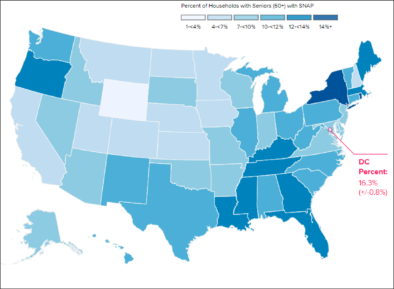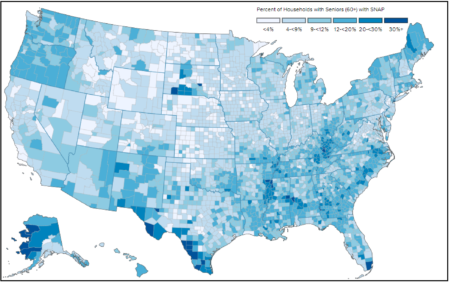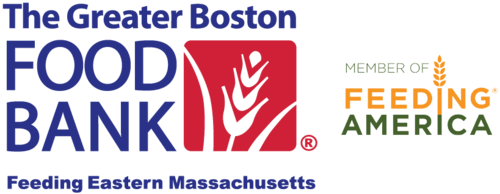1 in 8 MA senior households depend on SNAP
A new analysis of U.S. Census Bureau data found that 12.3 percent of Massachusetts senior households rely on the Supplemental Nutrition Assistance Program (SNAP, formerly food stamps)— more than the national average of 10.2 percent.
SNAP, the nation’s first line of defense against hunger, provides modest food benefits to eligible low-income households to buy healthy food. The average person receives $126 per month or $1.40 per meal.
Using recent data, the Food Research & Action Center (FRAC) and AARP Foundation collaborated to produce interactive maps showing SNAP participation rates among senior households by state and county.

Senior households by state map

Senior households by county map
In Massachusetts, one-third of seniors live on less than $20,000 annually. Seniors living on limited, fixed incomes often face difficult choices between paying for food, medicine, housing, and rising fuels costs during winter. SNAP alleviates some of these pressures by increasing food budgets.
Highlighting the importance of SNAP for seniors well-being, research shows that SNAP participation is related to better health outcomes and lower healthcare costs.
In Massachusetts, SNAP participation is higher among senior households than the national average. Although across the Commonwealth, 100,000 seniors are estimated to be eligible for SNAP but are not receiving benefits.
GBFB’s SNAP Outreach team helps seniors apply for SNAP by partnering with senior service organizations, housing sites, and GBFB senior programs. To learn more about our SNAP outreach or to contact a member of our SNAP outreach team, visit our GBFB SNAP webpage.
